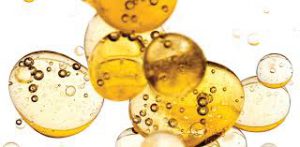Food insecurity is defined as limited or uncertain ability to acquire nutritionally adequate and safe food in socially acceptable ways (e.g., without resorting to emergency food supplies, scavenging, or other coping strategies) (Wunderlich & Norwood, 2006). About 48.1 million Americans were food insecure as of 2014, accounting for 15% of the population. The proportion of children in food insecurity is even higher, at 20%(America, 2015) . When the rate of food security is increasing and remaining high, as seen recently, the rate of obesity is also going up. However, participation in a food assistance program was previously shown to exacerbate the problem of obesity (Franklin et al., 2012). The real problem faced with food stamp programs is the access to adequate healthy foods and education about what healthy foods are, especially for women and children.
In the blog ” How Food Subsidy Programs Pushed Junk Food Off the Table”, the author cited the review by Andreyeva T. and Tripp A.S. (2016), and comes to the conclusion that nudging shoppers toward more healthful foods pushed cheap junk food out of the family shopping basket, and lower-income families were buying more healthful food as a result of the option restriction the government made. However, in the actual review article, the researcher only find that new restrictions lowering purchase of moderation (less healthful) food and beverages, without significant increase in healthful foods purchase. The biggest change found was purchase in moderation beverages. These findings do not support the claim that lower-income families are buying more healthful food.
We’ve already noticed that calorie-dense foods are significantly cheaper while healthy foods are increasingly more expensive, as shown by researchers (Wiggins et al., 2015). The energy density of food was found to be negatively associated with price. Reasonably, the recipients of food stamps would be attracted to cheaper foods with sufficient energy when on a tight budget. In this situation, the government can either put effort on educating the recipients why and how to eat healthy on a budget or just restrict their buying options. From the results of the original review, we can see that while restriction of shopping option had a fast impact on lowering purchase and thus intake of unhealthy foods and beverages, education on nutrition may still be needed in order to make people choose to buy more healthful products voluntarily. It is practitioner’s job to figure out how much effort is enough to get people to choose wisely.
STROM, S. (2016). How a Food Subsidy Program Pushed Junk Food Off the Table. Eat Well. Retrieved from http://www.nytimes.com/2016/10/05/well/eat/how-a-food-subsidy-program-pushed-junk-food-off-the-table.html
America, F. (2015). Hunger in America 2014, national report. August 2014: Print.
Franklin, B., Jones, A., Love, D., Puckett, S., Macklin, J., & White-Means, S. (2012). Exploring mediators of food insecurity and obesity: a review of recent literature. J Community Health, 37(1), 253-264. doi:10.1007/s10900-011-9420-4
Wiggins, S., Keats, S., Shimokawa, S., Alberto, J., Hernández, V., & Claro, R. M. (2015). The rising cost of a healthy diet.
Wunderlich, G. S., & Norwood, J. L. (2006). Food insecurity and hunger in the United States: National Academies Press.

